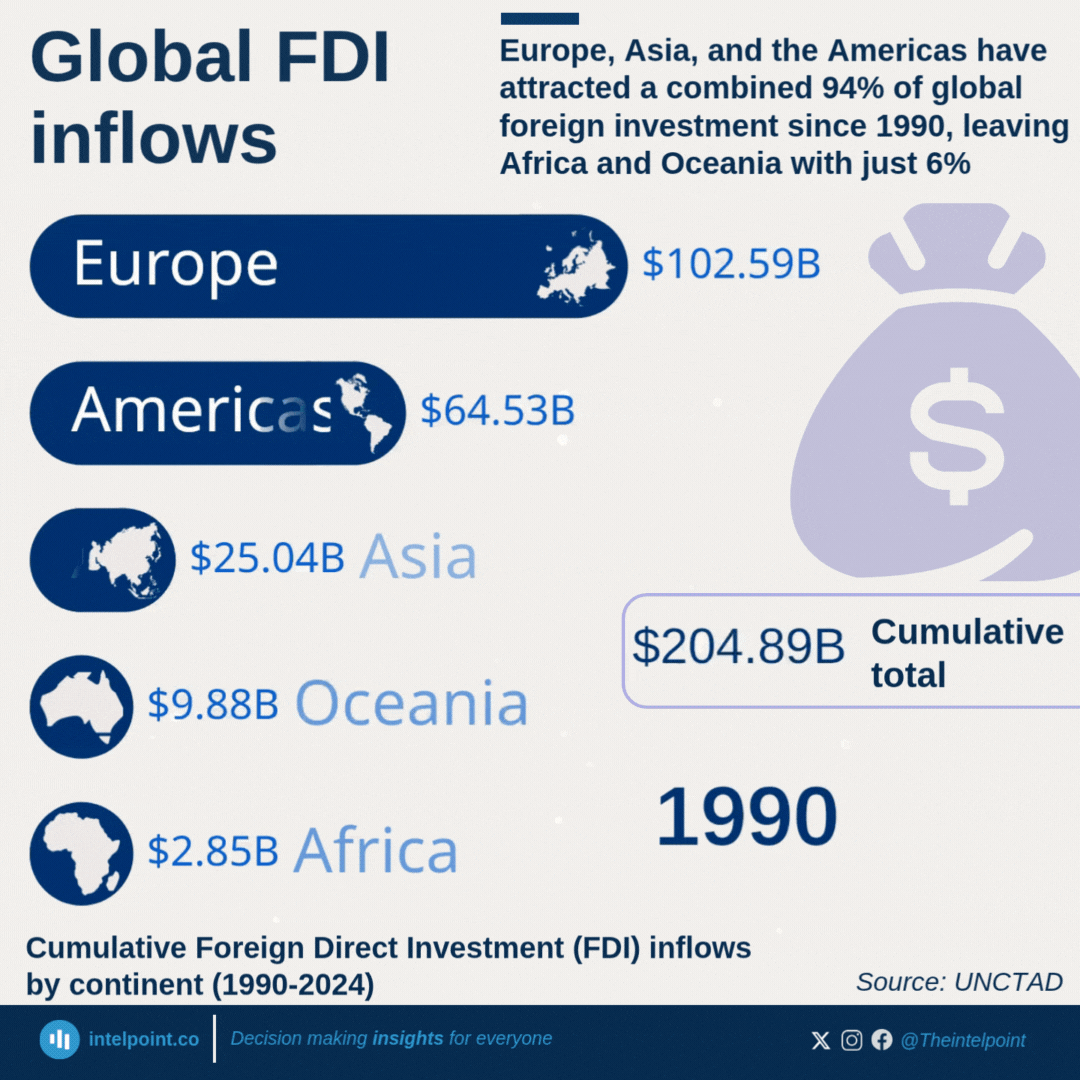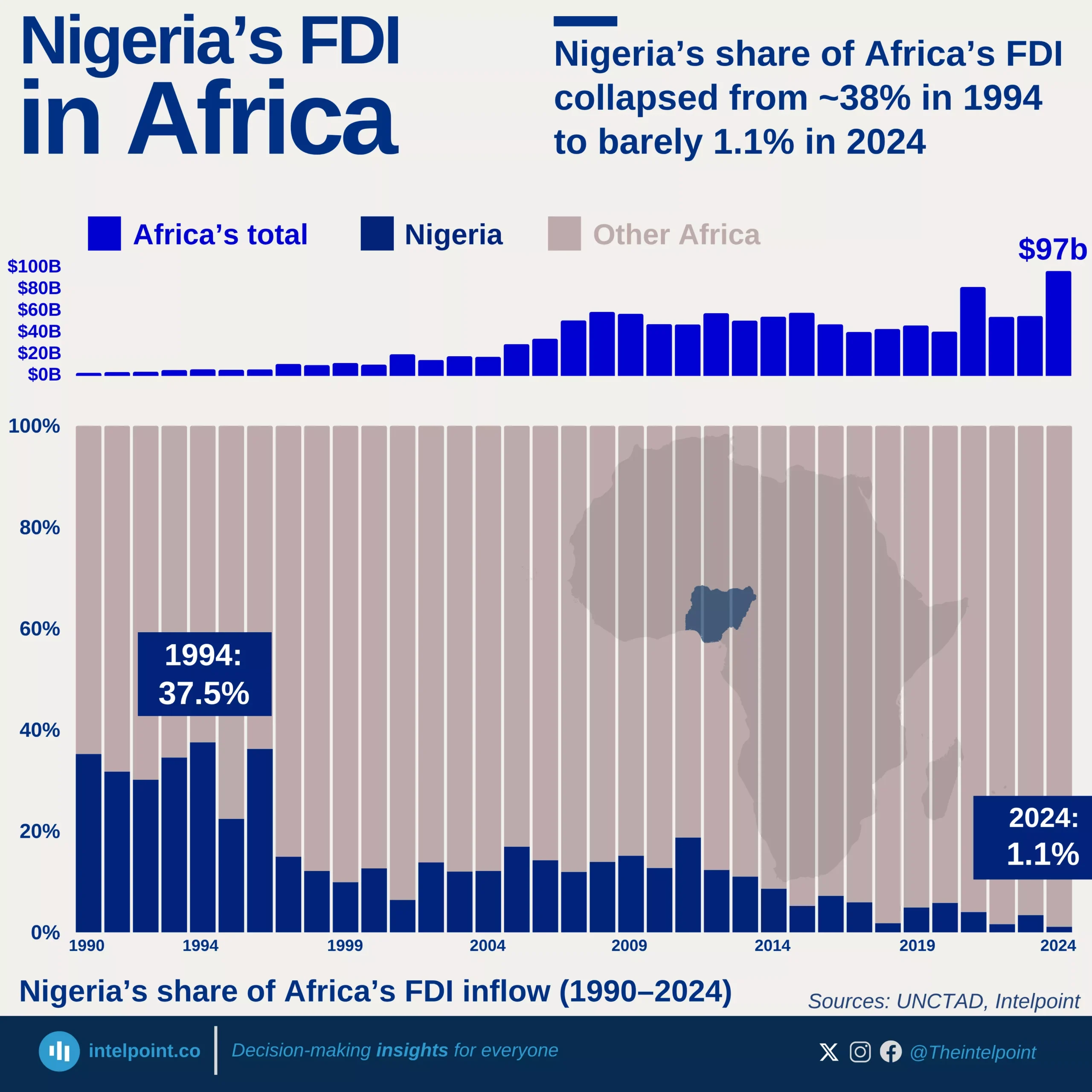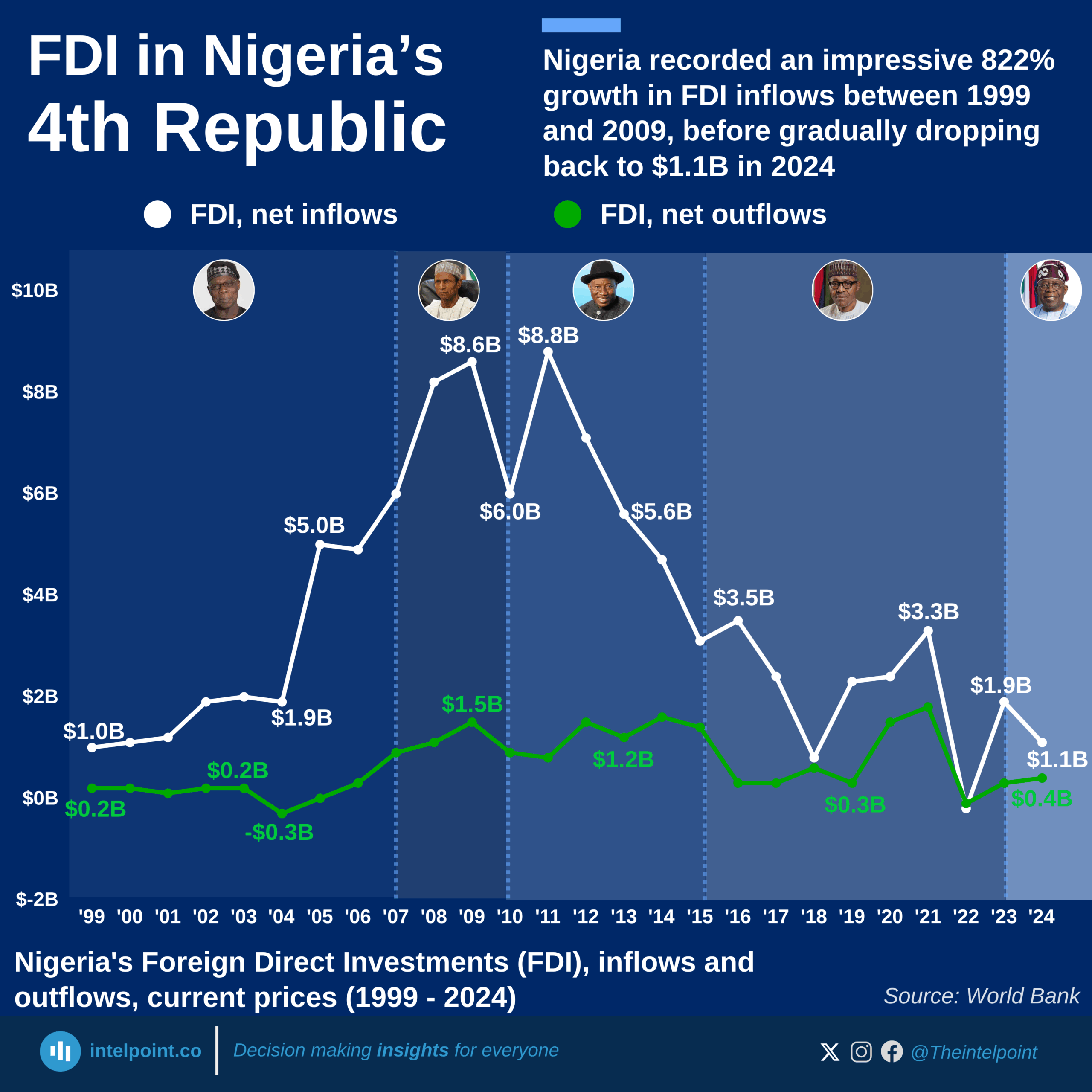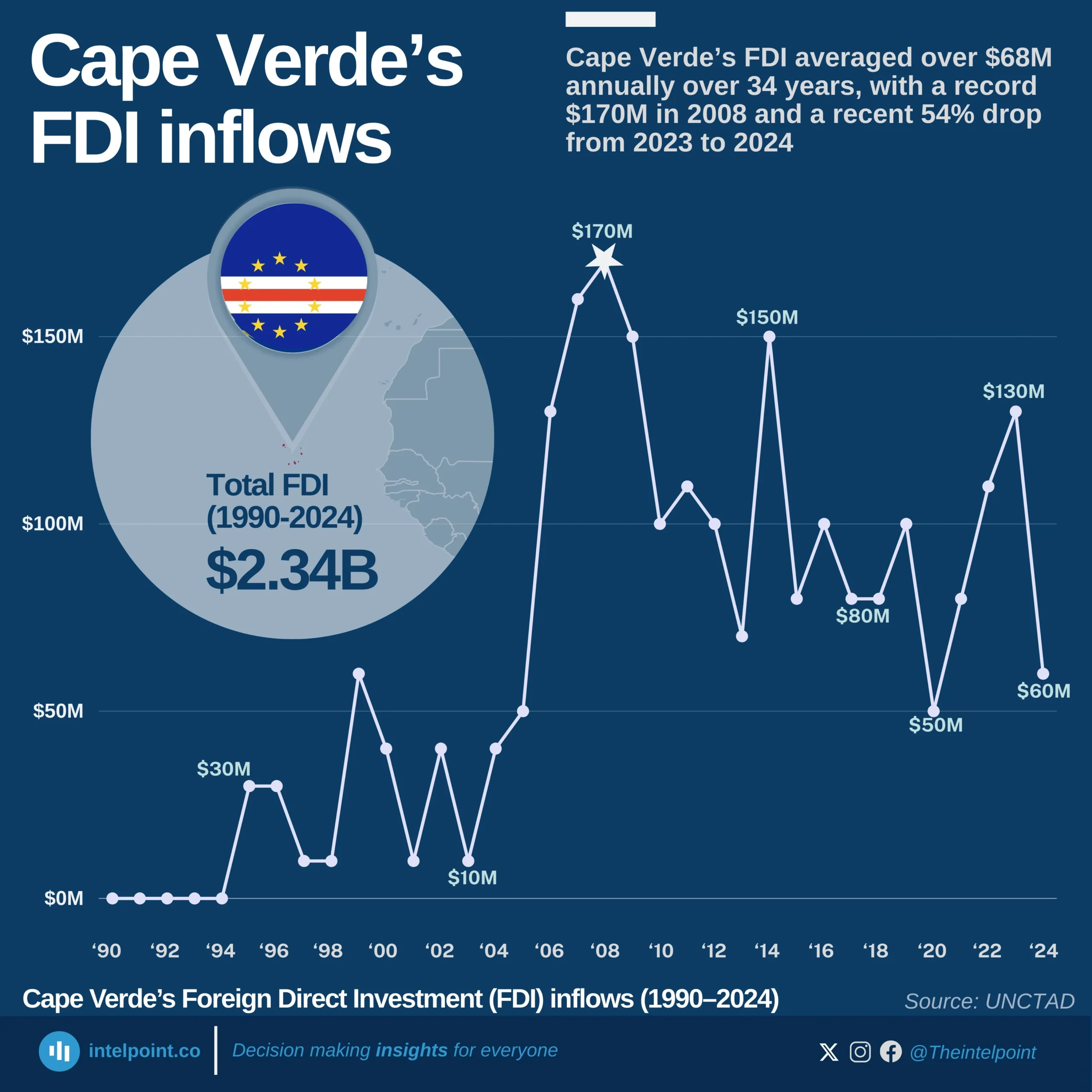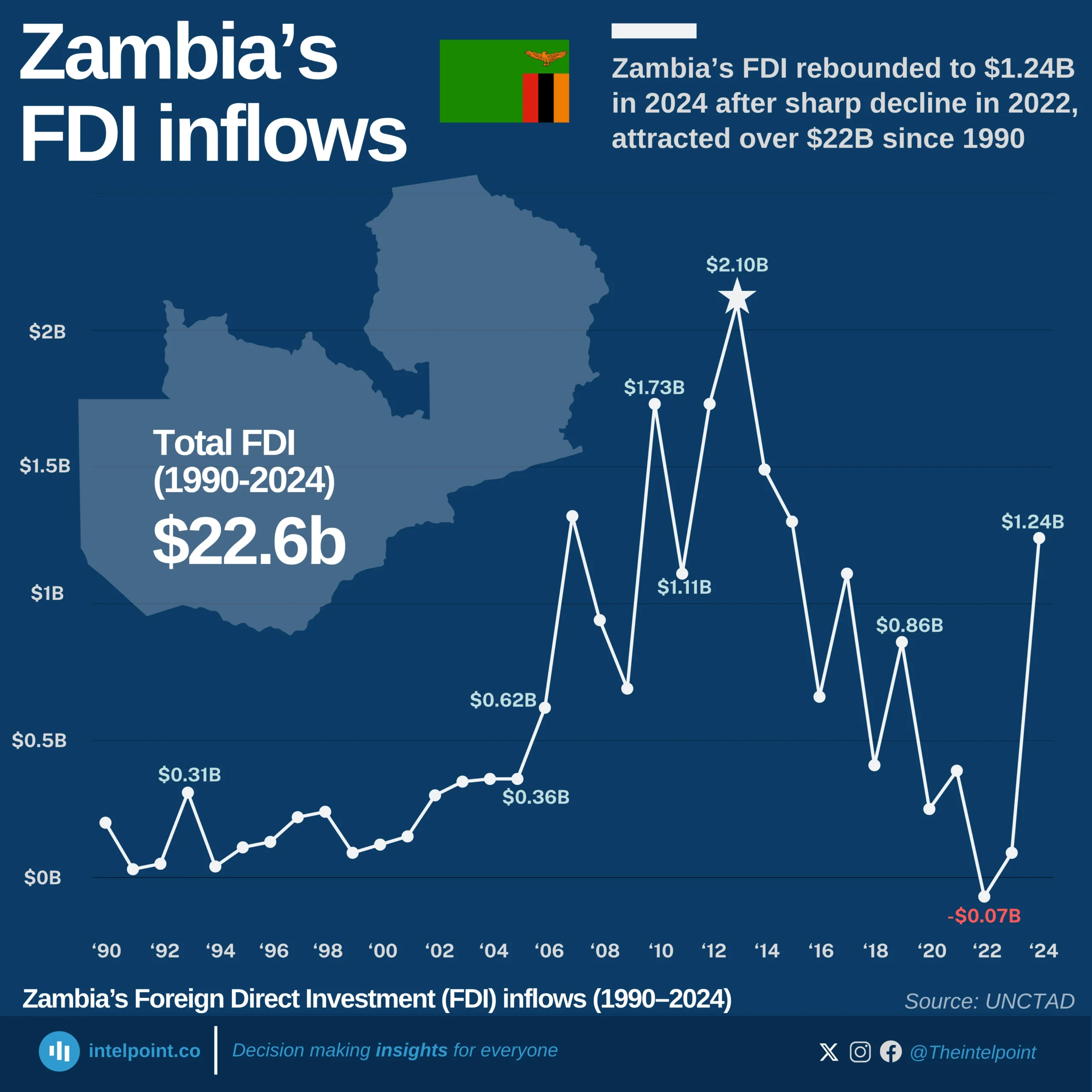Rwanda’s FDI record is a story of quiet resilience and gradual progress. In the 1990s and early 2000s, the country averaged only a few million dollars in investment each year, and some years recorded virtually nothing. It wasn’t until the mid-2010s that Rwanda began to consistently attract over $250 million annually, thanks in part to improving governance, stability, and strategic initiatives like the Visit Rwanda campaign.
Still, even as inflows increased, no year crossed the $1 billion mark. In 2024, Rwanda reached a record high of $820 million, showing a clear upward momentum. Over $2.7 billion came in during just the last five years.
